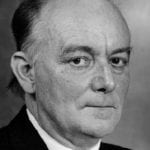Stories from the Visitor Book: Petrie Museum Visitors in the mid-Twentieth Century
By Anna E Garnett, on 28 September 2020
During Spring/Summer 2020, when UCL was closed due to the coronavirus pandemic, UCL Culture’s curatorial team worked with students from the Institute of Archaeology’s MA Museum Studies on our first-ever virtual work placements. These projects, which included archive transcription, documentation and object label writing, provided opportunities for the students to gain practical curatorial skills to prepare them for their future careers while undertaking valuable work towards better understanding the collections.
This blog post was written by Alexandra Baker and Yanning Zhao, UCL MA Museum Studies students.
When thinking about the Petrie Museum, the first thing that might come to mind is its vast collection: from ancient Egyptian artefacts to Flinders Petrie’s own personal belongings. As visitors, we can always discover interesting facts about those objects. However, did you know that museum visitor books also tell a story about the past? They are more than simply a list of names and addresses.
During summer 2020, our team transcribed 82 pages from the Museum’s visitor book and made fascinating findings about museum visitors between 1937 and 1959.
Three fun facts about our visitors:
- We had more international visitors than you might think!
You might think the Petrie Museum attracts more UCL staff and students than people from other parts of the world, but our findings show that international scholars regularly visited the museum in the last century (the orange sections on the map indicate where visitors came from). Many historical events happened between the 1930s and 1950s, but that did not stop people from all over the world visiting the museum. These international visitors travelled to London from Spain, France, and from even further afield including Chile and Japan.
- Most international visitors were from the United States
It seems that the majority of international visitors were from the US. Most of them recorded the cities and regions they came from, including New York, Phoenix and Boston.
- English is not the only language used by visitors
We have faced some challenges to translate the language that some visitors use into English. For example, one Japanese scholar used Japanese to record the name of his university. Another visitor from Berlin, surprisingly, used hieroglyphs to record their name as ‘Neferneferuaten Nefertiti’!
Famous Egyptologists also visited the Petrie Museum:

L to R: Hilda Petrie (Petrie Museum Archive); Olga Tufnell (https://en.wikipedia.org/wiki/Olga_Tufnell);
Sidney Smith (https://www.cambridge.org)
The visitor book also shows us that big names in Egyptology visited the Petrie Museum during this time, highlighting how the collection was, and still is, an important resource for the study of Egyptian Archaeology. Our famous visitors included:
- Hilda Petrie: Egyptologist and archaeologist
- Olga Tufnell: Archaeologist who worked on the excavation of the ancient city of Lachish in the 1930s
- Sidney Smith: Assyriologist who worked at the Iraq Museum, British Museum, UCL and King’s College London
- A. F. Shore: Scholar and Brunner Professor of Egyptology at the University of Liverpool
Many of our visitors were students!
The Petrie Museum’s visitor book also shows us how popular the museum was amongst students from UCL and beyond. Students visited the Museum from a range of disciplines, from archaeology to physics, and interestingly art students often visited it. Working closely with students and scholars from around the world is an important part of the museum’s work that continues today.
Alexandra Baker and Yanning Zhao are MA Museum Studies students at UCL’s Institute of Archaeology. Their summer placement was designed and supported by Dr. Anna Garnett, Curator of the Petrie Museum of Egyptian and Sudanese Archaeology.
 Close
Close






